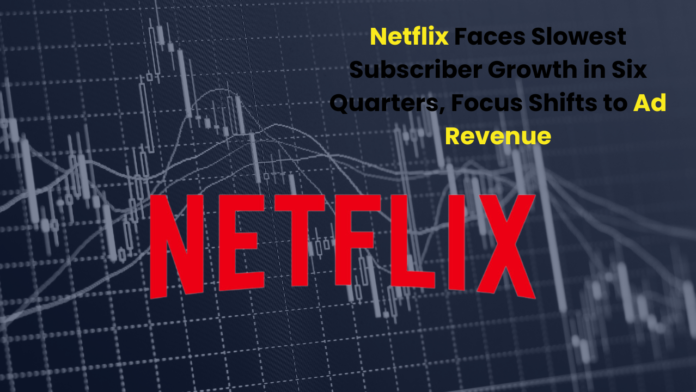Netflix is expected to report its slowest subscriber additions in six quarters this Thursday, with analysts forecasting the streaming giant added approximately 4 million new subscribers in the July-September period. This slowdown comes after the initial surge from the company’s password-sharing crackdown began to ease. As subscriber growth decelerates, Netflix is increasingly shifting its focus to alternative performance metrics, such as revenue growth and profit margins.
In a bid to refocus investor attention, Netflix will stop reporting subscriber data beginning in 2025. According to Jeff Wlodarczak, an analyst with Pivotal Research, the company aims to “continue growing subscribers at a healthy clip while leveraging their scale, ability to raise prices, and increase advertising dollars.”
Growing Ad-Supported Tier and Revenue Strategy
Netflix’s ad-supported plan, launched in late 2022, has shown steady growth. However, the company has been cautious about revealing specific financial performance details for the tier. Analysts estimate that Netflix’s advertising revenue for the third quarter will reach $242.7 million. While the ad business is in its early stages, Netflix does not expect it to become a major growth driver until 2026, leading some analysts to question the platform’s long-term revenue trajectory.
“They’re making less than a billion dollars a year in the U.S. on advertising, and that doesn’t make them look good,” noted eMarketer’s television and streaming analyst Ross Benes, hinting at growing investor concerns.
To increase revenue, Netflix has been nudging users towards its ad-supported plan. The company phased out its $9.99 basic ad-free plan in the U.S. and the UK for new subscribers and plans to eliminate it entirely for existing users. In comparison, the ad-supported tier is priced at $6.99 per month, while the standard plan without commercials costs $15.49.
Expanding Revenue Streams with Live Events and Original Content
As part of its efforts to boost revenue, Netflix is focusing on live events to attract more advertisers. Two major upcoming events include the Jake Paul vs. Mike Tyson boxing match in November and the company’s first NFL games in December. These initiatives aim to tap into the growing demand for live sports content, which could provide Netflix with a new avenue for ad revenue.
Additionally, the highly anticipated second season of the South Korean hit series Squid Game, slated for release in December, is expected to draw significant viewership, potentially boosting subscriber numbers in the final quarter of the year.
Financial Outlook and Stock Performance
Despite slower subscriber growth, Netflix is expected to report a 14.3% increase in overall revenue for the third quarter, bringing total revenue to $9.76 billion. However, this marks a slightly slower pace than in the previous quarter.
Netflix’s stock has responded positively to the company’s evolving strategy, rising 12.4% since it reported its second-quarter results in July. In comparison, the S&P 500 index gained just 5% over the same period, signaling that investors remain optimistic about the company’s ability to navigate the shifting streaming landscape.
As Netflix continues to explore new revenue streams and fine-tune its pricing models, the streaming leader is positioning itself for long-term growth in an increasingly competitive market.




